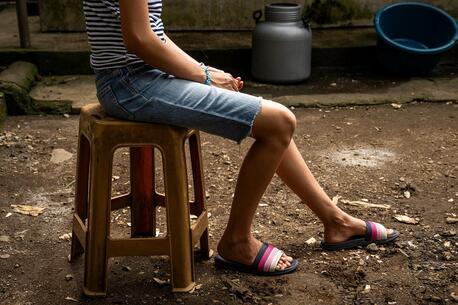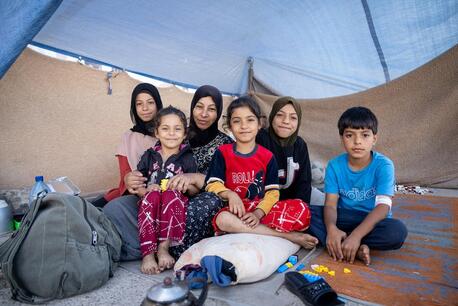
How Did UNICEF Help Halima Get Her Childhood Back?
For World Day Against Child Labor, join UNICEF in working to free millions of children from exploitation so they can recover their futures.
Americans love chocolate. But how is it made? And who makes it?
Trapped in child labor, like 168 million other children worldwide, Halima, a 10-year old girl in Cote d'Ivoire, understands firsthand the back-breaking work involved in providing raw cocoa for the candy bars we crave.
Before UNICEF stepped in, Halima spent days in the fields, harvesting and curing beans from cacao trees — the first steps in the long, arduous journey from farm to store.
"When I worked in the fields, I would gather the cocoa, put it in sacks and transport it,” Halima explains. “When the cocoa is loaded into the sack, it gets very heavy.”
Watch Halima's story and learn how UNICEF helped her and her village make school — rather than field work — a priority.
World Day Against Child Labor 2016 aims to help Halima — and millions of other kids — escape work that deprives them of childhood and dignity. Child labor also hinders their physical and mental development.
Its worst forms include slavery, forced labor, child soldiering, sexual exploitation and drug trafficking.
That's why child labor violates the U.N. Convention on the Rights of the Child, the international treaty that protects children and promotes their right to survive and thrive.

One of more than 3.3 million displaced Iraqis, Mustafa, 6, works with his father in a potentially hazardous industrial workshop in Baghdad. ©UNICEF/UN020100/Khuzaie
But child labor is a bad idea from a practical point of view, too.
Research confirms that children who engage in child labor often miss school, stunting their educations. It also reduces their ability to find stable jobs as adults and exposes them to workplace hazards. In fact, 85 million children engage in hazardous work.
This year, World Day Against Child Labor spotlights "supply chains" — or the step-by-step process involved in the manufacture and distribution of a product.
With globalization, supply chains have become very long, involving hundreds of millions of workers, small producers and enterprises across many countries, sometimes concealing the exploitation of children.

Trapped in child labor and unable to attend school, a young girl in a Burkina Faso gold mine hefts a bucket of water to wash dust from ground rocks. ©UNICEF/UNI162954/Nesbitt
UNICEF, and its partners for World Day Against Child Labor 2016, want to raise the public's awareness about the massive numbers of children involved in child labor and the damage it inflicts.
In Burkina Faso, for example, UNICEF helped 15,000 child workers escape gold mines.
In Nepal, UNICEF helped free 9,000 children from child labor, offered them shelter, food, clothes, healthcare, counseling, legal support, family mediation and other services, and reunited many with parents they had been separated from.
After UNICEF enabled Halima's parents to take her out of the cacao groves and send her back to school, Halima has a new ambition.
“I will finish my studies all the way, and I will become a teacher,” she vows.
We believe every child should have a childhood — not a day job.
Support UNICEF’s fight against child labor.
HOW TO HELP
There are many ways to make a difference
War, famine, poverty, natural disasters — threats to the world's children keep coming. But UNICEF won't stop working to keep children healthy and safe.
UNICEF works in over 190 countries and territories — more places than any other children's organization. UNICEF has the world's largest humanitarian warehouse and, when disaster strikes, can get supplies almost anywhere within 72 hours. Constantly innovating, always advocating for a better world for children, UNICEF works to ensure that every child can grow up healthy, educated, protected and respected.
Would you like to help give all children the opportunity to reach their full potential? There are many ways to get involved.





